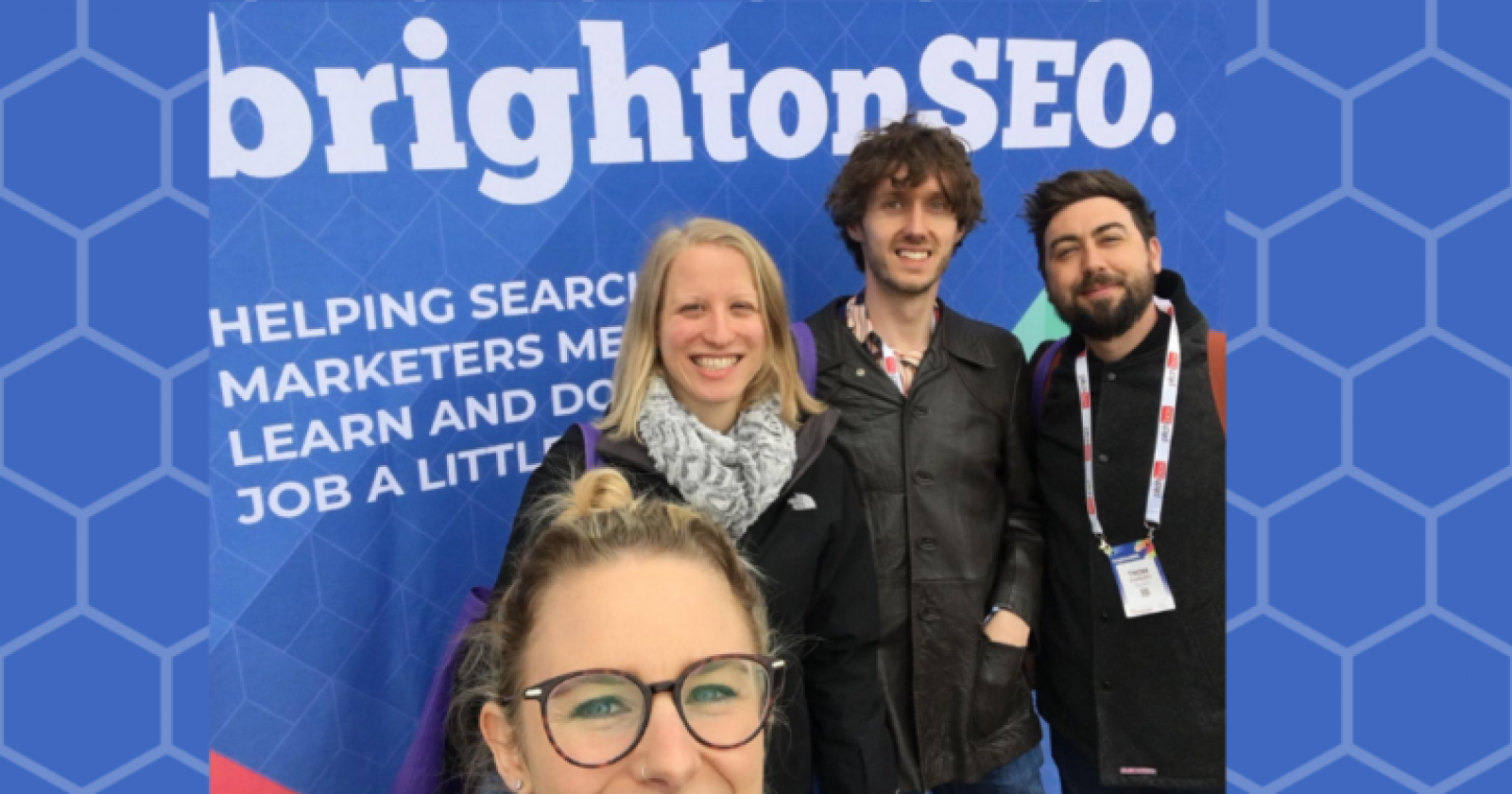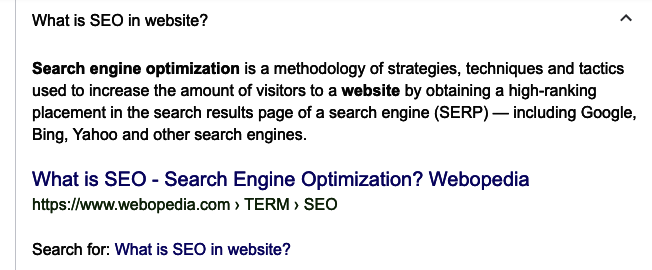

We’re back at Loom HQ after our annual pilgrimage to the seaside to attend our most beloved digital marketing conference: Brighton SEO.
As always, our noggins are full to the brim with fresh digital marketing and SEO knowledge that we’re eager to start implementing across our client’s websites.
However, Brighton SEO has something for everyone – not just us SEO boffins. So, in this article, we highlight some easy to implement points and takeaways from this year’s conference for you to apply in your business today.
1. Approach site speed from a user’s point of view
In today’s SEO world, there’s a lot of focus on the importance of site speed. However, a talk by Rachel Costello took a refreshingly direct and user-focused approach to the topic.
Rachel highlighted the need to focus on user expectations and perception of site speed just as much as the more common site speed metrics. She pointed out that different mobile devices have different technical specifications and therefore can take radically different amounts of time to load content. The difference in load time between an iPhone 8 and an entry-level phone, for example, can be over 30 seconds.
Key takeaway: Focus on above the fold content (content which is shown before you have to scroll) and getting visible content to load as soon as possible. Rachel also advised personalising user experience based on device type and quality of connection.
You can find Rachel’s presentation on site speed here.
2. Take advantage of the SERP features and snippets

The trend towards featured snippets (see an example of a featured snippet above) in the search engine results pages (SERPs) is spooking the SEO industry somewhat. The threat of Google moving towards click-through-free SERPs is enough for the SEO sceptics to start chanting “SEO is dead!”
However, we know that this is far from the case. And a talk from Izzi Smith discussed how businesses can actually benefit from bringing their website content onto Google’s main results page, while still driving ‘meaningful’ clicks to their websites.
Key takeaway: Businesses should spend time on enriching their featured snippets and SERPs features in a way that can actually increase click-through rate. Make sure you help users to fulfil one single purpose and focus on very specific queries. This way you can entice relevant users to click through to your website because your snippet will have completely satisfied their intent.
You can see more of Izzi’s SERP snippet talk here.
3. Consider how agencies onboard and maintain their relationships with you
Heather Physioc delivered an incredibly rich and detailed presentation on the long-term value of on-boarding clients in the right way – something that we at Loom work really hard to achieve.
Heather articulated the difficulties that can arise between you as a business and an agency when time isn’t given over to fully understanding each other, the best way to work and where value is added. She covered how agencies that approach onboarding in a way that enhances the understanding and prioritisation between both parties, allows search to have its full impact for the client.
Key takeaway: Work with agencies that recognise the importance of really understanding your business and market, and ensure communication is maintained at all times. Give agencies the access and time required to get them up to speed with your products, services and how you operate as a business.
You can see Heather’s slideshow here.
4. Analyse competitor content to inform your content strategy
Lana Burgess spoke about how businesses can inform their own content strategy by analysing their competitors’ content. While this is a well-known strategy in the world of content marketing, she offered some interesting insights on how businesses can go about improving their own content marketing by keeping an eye on the competition.
Key takeaways:
- View your competitors’ content to work out why users should choose your brand over theirs – this will allow you to really hone in on your USPs.
- Analyse the top five results for your key search terms in Google, and look at the on-page SEO of these competitors – what page title and headers are they using? What’s the format? How can you replicate this on your website?
You can see Lana’s full competitor research presentation here.
5. Start planning Black Friday now
Black Friday should already be marked in every business’ calendar as a key event, but this talk from Alexandra Coutts explained how you should be planning well in advance.
She explained how in today’s market, consumers assume that all brands will have deals on Black Friday, and that if you want to stand a chance of cashing in on the weekend, you need to offer something to consumers. She explained that consumers start researching products in October and will return over the Black Friday period to purchase.
Key takeaways:
- Black Friday may be months away but set a Black Friday deal page now. During times when you’re not using this page, add a signup form for latest deal offers, or add a message that says: ‘Our Black Friday deals have finished for this year. Find more deals over on our sales page.’
- In August/September, start planning your black friday products – start to identify your high margin items that should be added to the Black Friday sale.
- In September, use the #bloggerswanted to start finding influencers – think about who would want to share your Black Friday deals with their followers.
- Look at your past data – what do people usually buy most of? Are they drawn to cheaper products or those with a higher discount?
- Make sure your site is optimised for mobile first – last Black Friday 57% purchases were on mobile
- Look at adding ‘only 3 left in stock’ messaging to push people to purchase then and there – start when there’s only 10 left
- Upgrade your server load capacities for the Black Friday weekend
You can watch Alexandra’s SlideShare on Maximising your ecommerce revenue over Black Friday here.
6. Work on improving your conversion rate
Improving conversion rate should be a priority for all businesses with a website, and this talk by Faye Watt included some innovative and easy to implement ideas about how websites can achieve this.
Key takeaways:
- Personalise your website – Include personal recommendations based on user browsing and purchase history on your homepage
- Enable cross-selling – Show related items on your product pages, including variations of the same product (colours etc)
- Include product image – According to Watt, 56% of people interact with product images on an eCommerce website. Show products in different styles e.g. lifestyle, close up of features, classic product shot and shown to scale
- Add reviews
- Reduce shipping costs –Watt explained that 55% of shoppers abandon their order if the shipping is too pricey. So, wherever possible, absorb the delivery into the product price.
- Offer a guest check out – Offer a guest checkout and then give users the option to sign up to an account. She explained that 34% of people will abandon if there is no guest checkout option
- Reduce interruptions – People are more likely to abandon a cart if it’s too difficult to proceed with the payment. Work to reduce the number of steps they need to take, and visually show users how many stages there are in the checkout process
You can see Faye’s full presentation on conversion rate here.
Digital Marketing at Loom
Here at Loom, we’re dedicated to keeping up-to-date in the fast-paced world of digital marketing. From industry conferences such as Brighton SEO to weekly knowledge shares within the team, it’s our mission to be ahead of the digital marketing curve.
We pride ourselves on delivering work that’s current, innovative and forward thinking. So, if you’re looking to work with an agency that goes above and beyond to understand your business and deliver excellent results, get in touch today. Call us on 0117 923 2021 or send us an email us at [email protected].
Insights & inspiration
Digital marketing expertise delivered direct to your inbox.
Related posts


What Is Google’s Search Algorithm?

